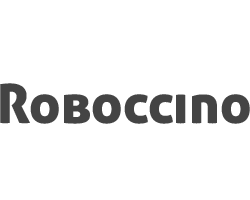How to Optimize Your Production Line with Heated Filling Machines for Maximum Efficiency
In the modern manufacturing landscape, maximizing efficiency and productivity is crucial to staying competitive. One of the most effective ways to achieve this is through the integration of advanced technology, particularly the Heated Filling Machine. This innovative equipment is designed to enhance production processes by maintaining optimal temperatures for liquids during filling, ensuring consistency and quality in the final product.
In this guide, we will explore various strategies for optimizing your production line with Heated Filling Machines, focusing on key aspects such as workflow integration, maintenance practices, and employee training. By understanding how to effectively utilize this machinery, manufacturers can significantly improve their operational efficiency and reduce downtime, ultimately leading to higher profitability and customer satisfaction.
Understanding the Benefits of Heated Filling Machines in Production Lines
Heated filling machines offer significant advantages for production lines, particularly in industries where temperature-sensitive products are processed. By maintaining an optimal temperature, these machines ensure that products like sauces, pharmaceuticals, and liquid food items retain their desired consistency and quality. The controlled heating minimizes viscosity, allowing for smoother filling processes that reduce the risk of clogs and downtime, ultimately leading to increased productivity.
Additionally, the use of heated filling machines can enhance product shelf-life. By ensuring that filling occurs at the correct temperature, these machines significantly reduce the risk of microbial growth, preserving the integrity of the product over time. This not only satisfies regulatory requirements but also builds consumer trust in the brand. Furthermore, the integration of heated filling technology can lead to a more efficient use of resources, as it streamlines the filling process and reduces waste, aligning with modern sustainability goals while boosting overall production line efficiency.
Key Features to Look for in an Optimal Heated Filling Machine
When optimizing a production line, the choice of a heated filling machine can significantly enhance efficiency and output quality. One of the key features to consider is the machine's temperature control system. A precise temperature management system ensures that products maintain their desired viscosity, directly impacting fill rates and reducing waste. According to industry reports, using advanced temperature control can increase filling speeds by up to 30%, thereby improving overall production efficiency.
Another critical feature is the machine's construction materials. Opting for stainless steel components not only guarantees durability but also complies with hygiene standards, which is essential for food and pharmaceutical industries. Reports indicate that machines built with high-quality materials can result in a 15% decrease in maintenance costs over time. Furthermore, automated cleaning systems integrated within the heated filling machines can reduce downtime, allowing for more consistent production cycles and maximizing output.
Lastly, flexibility in machine design should not be overlooked. The ability to easily switch between product types and adjust fill volumes can significantly benefit manufacturers dealing with varying production demands. A research study found that facilities utilizing versatile heated filling machines reported a 25% enhancement in their operational agility, positioning them to better respond to market changes and customer needs.
Steps to Integrate Heated Filling Machines into Existing Production Systems
Integrating heated filling machines into existing production systems can significantly enhance operational efficiency and product quality. According to a report by the Filling Machinery Manufacturers Association, heated filling technology can increase production speed by up to 30% compared to traditional methods. To begin, assess your current production line’s layout and identify areas for improvement. Ensure that the heated filling machine is compatible with existing equipment and can be seamlessly incorporated, minimizing downtime during the transition phase.
Once compatibility is established, train your staff on the new machinery. Research shows that businesses investing in employee training experience a 25% increase in machinery utilization and overall productivity. It is essential to implement a robust maintenance schedule to guarantee the heated filling machines operate at peak efficiency. Utilizing data from the International Society for Automation, regularly monitored machines can reduce operational costs by 20% due to fewer breakdowns and lower repair expenses. By strategically integrating heated filling machines, companies can optimize their production processes and achieve maximum efficiency.
Best Practices for Maintaining and Operating Heated Filling Machines
Maintaining and operating heated filling machines efficiently is crucial for maximizing productivity in your production line. Regular maintenance is key to preventing downtime and ensuring consistent performance. Schedule routine inspections to check for wear and tear on components such as pumps and seals. This proactive approach can identify potential issues before they lead to costly disruptions.
**Tips:** Consider implementing a daily checklist for operators to ensure all machine settings are calibrated correctly. This will help maintain optimal temperatures and flow rates, reducing waste and improving efficiency. Additionally, keep a log of maintenance activities to track patterns or recurring issues, which can inform future maintenance strategies.
Proper training for staff operators is also essential to maximize the efficiency of heated filling machines. Well-trained personnel will understand the intricacies of the machines and can quickly troubleshoot minor issues. Encourage operators to share insights on machine performance and provide feedback for continuous improvement.
**Tips:** Regular training sessions can empower your team with new techniques and best practices, ultimately enhancing operational efficiency. Consider setting up a mentorship program pairing experienced operators with newcomers to spread knowledge effectively.
Production Line Efficiency with Heated Filling Machines
This chart illustrates the efficiency percentage of production lines using heated filling machines across different operational settings. The data shows how various temperature settings influence overall efficiency.
Real-world Examples of Efficiency Gains from Heated Filling Machines in Industry
Heated filling machines have transformed how industries approach production efficiency. By maintaining the temperature of materials during the filling process, companies can significantly reduce viscosity and improve flow rates, leading to faster production cycles. For instance, a beverage manufacturer implemented a heated filling solution that increased their output by 25%. As a result, they not only met rising demand but also reduced operational costs associated with extended production times.
When integrating heated filling machines into your production line, consider these tips. First, assess the specific temperature requirements of the materials being processed. Optimizing temperature settings can lead to better consistency and quality in the final product. Second, regularly maintain the heating components to avoid any potential downtimes or inconsistencies in filling speed. Finally, train your staff on the new systems to ensure they can operate and troubleshoot effectively, maximizing the benefits of the technology.
Another real-world example comes from a cosmetics manufacturer that experienced a 30% increase in throughput after switching to heated filling machines. This change minimized the risk of product spoilage while ensuring better precision in filling. Such efficiency gains highlight the transformative potential of heated filling solutions in various industries.

